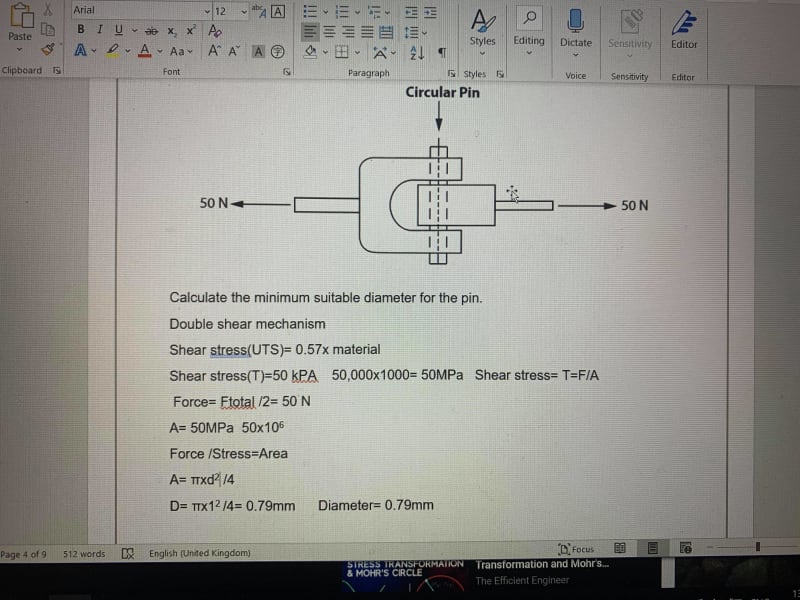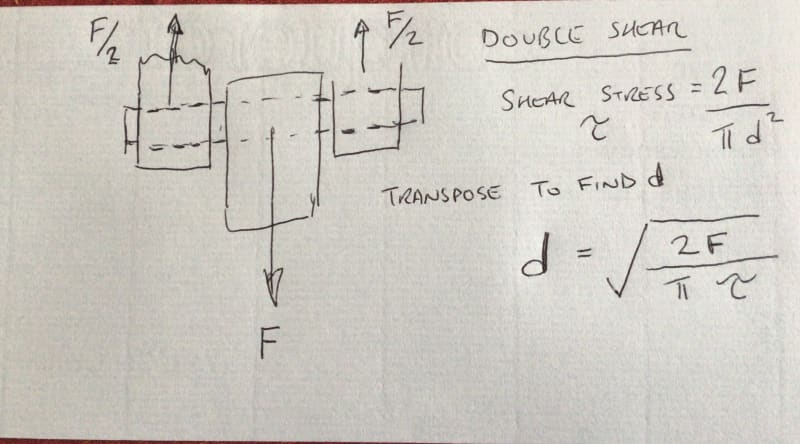ian3mith
Student
- Feb 14, 2021
- 8
Hello, guys, I am new to the website, I am stuck on this question that I need help with.
There is a pin that connects 2 rods in a framework. The shear stress of the pin is limited to 50 kPA.
I need to calculate the minimum suitable diameter for the pin in the middle. But I am not sure how to get there. could someone explain the steps for me I would appreciate it a lot.
Thanks guys.


![[upsidedown] [upsidedown] [upsidedown]](/data/assets/smilies/upsidedown.gif)
